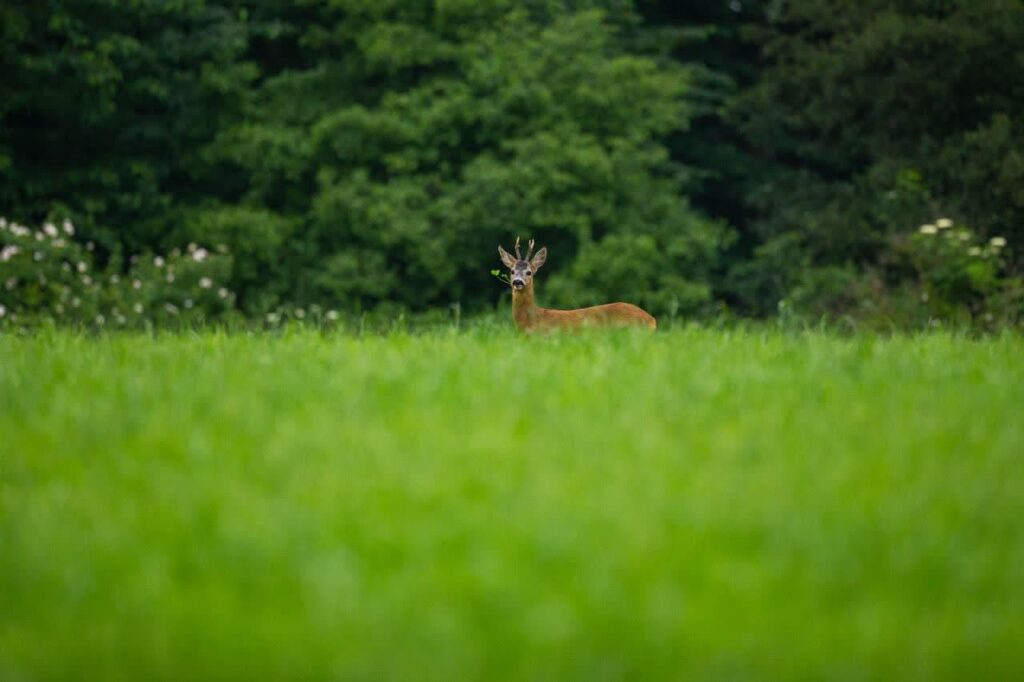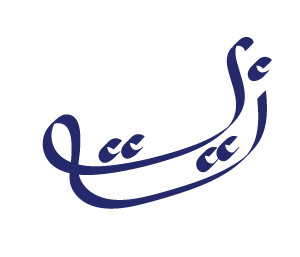Introduction
In the heart of pristine woodlands and dense forests, where the dappled sunlight filters through the foliage, a remarkable creature gracefully roams, often concealed from the human gaze by its exceptional talent for blending into its surroundings. The Muntjac deer, scientifically known as Muntiacus, represents a true marvel of nature. As we delve into the world of this captivating species, we will uncover a wealth of information about its physical characteristics, behavior, habitat, and its unique position in the animal kingdom.
Muntjac deer, often referred to as “barking deer” due to their distinct vocalizations, are not your typical deer species. They are pint-sized compared to their larger relatives. However, don’t let their diminutive stature fool you; these deer possess a beauty and charm that is nothing short of enchanting. Their reddish-brown coat adorned with delicate white spots and a characteristic V-shaped marking on their faces sets them apart as a species worth celebrating.
As we embark on this journey of exploration, we will peel back the layers of mystery surrounding the Muntjac deer. We’ll reveal their solitary nature, their dietary preferences, and their remarkable ability to navigate their natural habitats with unparalleled expertise in camouflage. Join us as we venture deeper into the world of these elusive creatures, uncovering their secrets and gaining a profound appreciation for the masters of disguise among us.
Physical Characteristics
Size and Appearance
The Muntjac deer is known for its diminutive size, making it one of the smallest deer species globally. On average, Muntjacs stand about 16 to 24 inches tall at the shoulder, and their body length ranges from 35 to 53 inches. Despite their small stature, these deer exhibit striking features, including a reddish-brown coat with white spots and a distinctive V-shaped marking on their faces.
Antlers and Glands
Unlike some of their larger deer relatives, Muntjacs possess short, unbranched antlers. In males, these antlers are small, sharp, and often hidden beneath tufts of fur. Both males and females have prominent preorbital glands near their eyes, which they use for scent marking and communication within their social groups.

Behavior
Masters of Camouflage
Camouflage is an essential survival strategy for many animals in the wild, and Muntjac deer have honed this skill to perfection. Their ability to blend seamlessly into their natural surroundings is nothing short of remarkable and plays a crucial role in their survival. Here’s an in-depth look at their camouflage behavior:
Coat Coloration:
Muntjac deer sports a reddish-brown coat adorned with white spots. This coloration is a key element of their camouflage, allowing them to mimic the dappled sunlight that filters through the forest canopy. The white spots break up their outline, making them less conspicuous against a background of leaves, shrubs, and tree trunks.
Cryptic Markings:
In addition to their coat color, Muntjacs have a characteristic V-shaped marking on their faces, often referred to as the “mask.” This facial marking helps break up their facial outline, making it harder for predators to detect them, especially when they are resting among the vegetation.
Quiet Movements:
Muntjac deer are known for their cautious and deliberate movements. They take slow, deliberate steps and avoid sudden or erratic motions. This slow, stealthy approach minimizes the rustling of leaves or other sounds that could give away their presence to predators.
Stillness and Freeze Response:
When they sense danger, Muntjacs often employ a freeze response. They remain motionless, relying on their camouflage to make them virtually invisible. Predators, even those in close proximity, may overlook them entirely due to this remarkable stillness.
Nocturnal Behavior:
Being primarily crepuscular and nocturnal animals, Muntjac deer are active during low-light conditions. This behavioral adaptation allows them to take advantage of the natural shadows and reduced visibility that come with dawn and dusk. It’s also during these times that their camouflage is most effective.
Use of Cover:
Muntjacs are skilled at utilizing cover in their environment. They often position themselves behind vegetation or trees, further enhancing their camouflage. This strategy allows them to remain concealed while keeping a watchful eye on their surroundings.
Avoidance of Open Spaces:
Muntjac deer are cautious about venturing into open spaces. Their preference for dense vegetation provides them with ample opportunities to blend in with their surroundings, reducing their vulnerability to predators.
In conclusion, Muntjac deer’s camouflage behavior is a complex interplay of coat coloration, facial markings, slow and stealthy movements, stillness, and a preference for low-light conditions and cover. Their ability to masterfully disappear into their natural habitat is a testament to the marvels of adaptation in the animal kingdom, making them truly the masters of camouflage in the wild.
Solitary Nature
Muntjac deer, often referred to as “barking deer” due to their distinctive vocalizations, are primarily .;/.solitary creatures. Their behavior differs significantly from many other deer species, which often form herds. This solitary nature is one of the key aspects that make Muntjacs unique.
Solitary Foraging:
Muntjacs prefer to forage alone, particularly during their active periods, which are typically dawn and dusk. This behavior reduces competition for food resources and minimizes the risk of detection by predators or other potential threats.
Minimal Social Interaction:
Unlike herd-forming deer species, Muntjac deer have limited social interactions. They do not engage in complex social hierarchies or exhibit the same level of group cohesion. Their solitary behavior is reflected in their territoriality, as they mark their territory with scent markings and vocalizations to deter other Muntjacs.
Diet and Feeding Behavior
Generalist Feeders:
Muntjac deer are generalist feeders, meaning they have a flexible diet that allows them to adapt to a wide range of food sources. Their diet includes various plant materials such as leaves, fruits, flowers, and bark. This adaptability enables them to thrive in diverse habitats, from dense forests to grassy woodlands.
Selective Foraging:
While they are generalists, Muntjacs are also selective foragers. They carefully choose their food based on availability and nutritional content. This selective behavior helps them optimize their energy intake and meet their dietary requirements.
Vocalizations
Barking Calls:
Muntjac deer are known for their barking calls, which serve several purposes. These calls are often used to communicate with other members of their species, especially during the breeding season. The barks can signal the presence of a nearby Muntjac and may be used to establish territory boundaries.
Grunts and Whistles:
In addition to barking, Muntjacs produce grunts and whistles, which are part of their vocal repertoire. These sounds can vary in intensity and duration and are believed to play a role in social interactions and maintaining contact with other Muntjacs.
Reproductive Behavior
Breeding Season:
Muntjac deer typically have a defined breeding season, which varies by region. During this time, male Muntjacs may become more vocal and territorial as they compete for the attention of females.
Solitary Matings:
Mating among Muntjac deer is a relatively solitary affair. Unlike some other deer species, which engage in elaborate courtship displays, Muntjacs may mate without extensive interaction between the male and female.
In summary, the behavior of Muntjac deer is characterized by their solitary nature, selective feeding habits, vocalizations, and adaptability to various habitats. Their unique behaviors have allowed them to thrive in their natural environments, often hidden from human observers by their exceptional camouflage skills. Understanding these behaviors is essential for appreciating the fascinating lives of these masters of camouflage in the animal kingdom.
Habitat
Range
Muntjac deer are native to various regions of Asia, including India, Sri Lanka, China, and Southeast Asia. Their adaptable nature enables them to inhabit a wide range of ecosystems, from tropical rainforests to deciduous woodlands and hilly terrains.

Conservation Status
Threats to Muntjac Deer
Despite their remarkable adaptability and mastery of camouflage, Muntjac deer face a variety of threats to their populations and habitats:
Habitat Loss:
One of the most significant threats to Muntjac deer is habitat loss. As human populations expand, forests are cleared for agriculture, infrastructure development, and urbanization. This reduces the available habitats for Muntjacs, forcing them into smaller and more fragmented areas.
Hunting:
In certain regions, Muntjac deer are hunted for their meat and antlers. This hunting pressure can lead to a decline in their numbers, particularly when not regulated or managed sustainably.
Invasive Species:
Invasive plant species can disrupt the natural vegetation that Muntjac deer rely on for food. The spread of these invasive plants can reduce the quality of their habitat and impact their foraging opportunities.
Human Encroachment:
Muntjacs tend to avoid areas with high human activity, which can limit their available habitat. As human populations expand further into natural areas, it can lead to increased disturbances and habitat degradation for these deer.
Conservation Efforts
Efforts to protect Muntjac deer and their habitats are crucial for their survival:
Protected Areas:
Establishing protected areas and wildlife reserves is a fundamental step in conserving Muntjac populations. These areas provide safe havens where the deer can thrive without the immediate threat of habitat destruction or hunting.
Habitat Restoration:
Habitat restoration projects aim to rehabilitate areas that have been degraded by deforestation or invasive species. By restoring native vegetation, these projects create better foraging opportunities for Muntjac deer.
Education and Awareness:
Conservation organizations work to raise awareness among local communities about the importance of preserving Muntjac deer and their habitats. Education programs help reduce hunting pressure and promote coexistence with these elusive creatures.
Sustainable Hunting Practices:
In regions where hunting is a traditional activity, efforts are made to promote sustainable hunting practices. This involves setting regulations to limit hunting quotas and protect Muntjac populations from overexploitation.
Results of Conservation Efforts
Conservation efforts have yielded some positive results for Muntjac deer:
Population Stabilization:
In areas where conservation measures have been implemented effectively, Muntjac deer populations have stabilized, and in some cases, even increased.
Habitat Protection:
The establishment of protected areas has provided secure habitats where Muntjacs can thrive without the immediate threat of habitat loss.
Reduced Hunting Pressure:
Awareness campaigns and sustainable hunting practices have led to a reduction in hunting pressure on Muntjac populations in certain regions, allowing them to recover.
While challenges persist, these conservation efforts demonstrate that with dedicated action and community involvement, we can help safeguard the future of Muntjac deer and ensure that these masters of camouflage continue to enchant us with their presence in the wild.
Conclusion
In the world of camouflage, Muntjac deer stand out as true masters. Their small size, unique appearance, solitary behavior, and adaptability to various habitats make them a fascinating subject of study for wildlife enthusiasts and researchers alike. As we continue to explore the wonders of the animal kingdom, let us remember the Muntjac deer, a species that thrives in silence, hidden in plain sight, and deserves our admiration and protection.
By providing this comprehensive insight into the world of Muntjac deer, we hope to not only raise awareness but also foster a deeper appreciation for these remarkable creatures that have mastered the art of disappearing into their surroundings.

